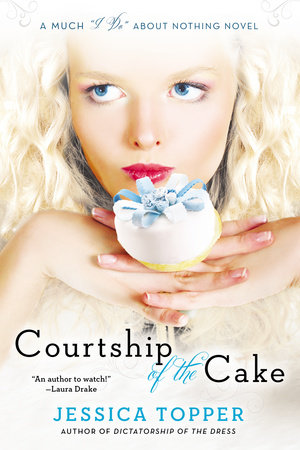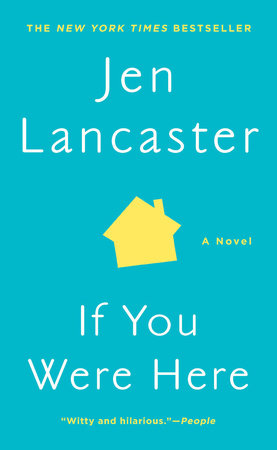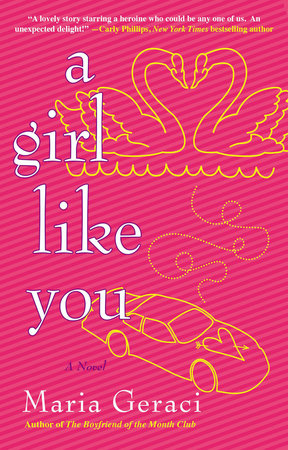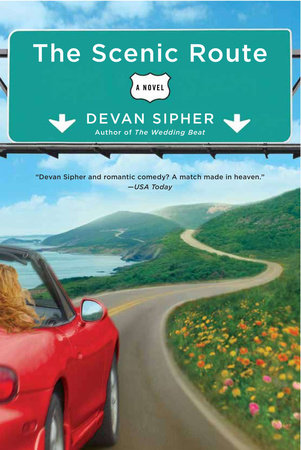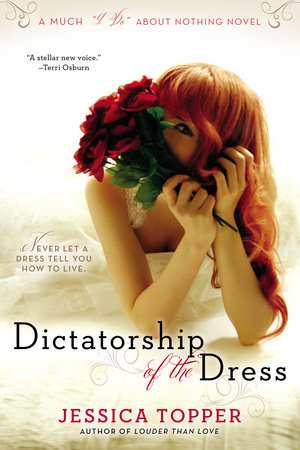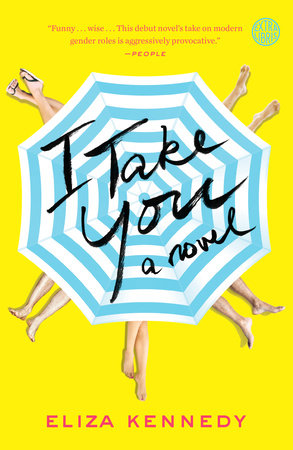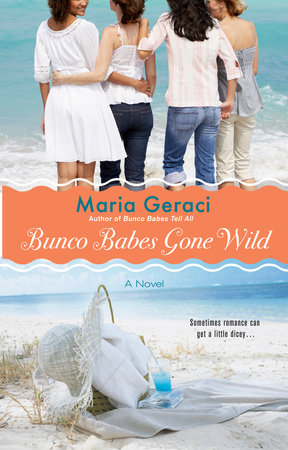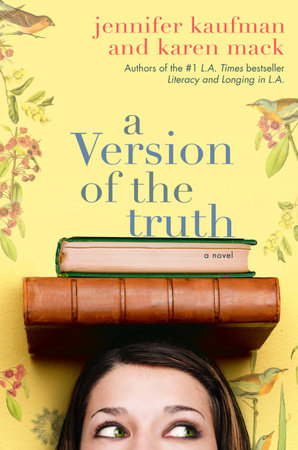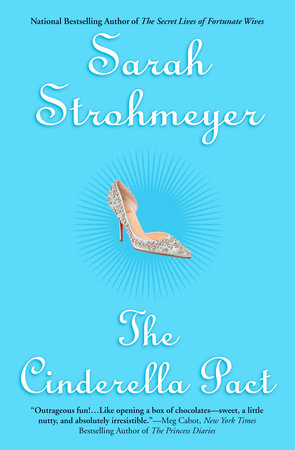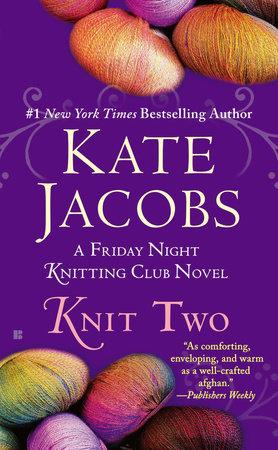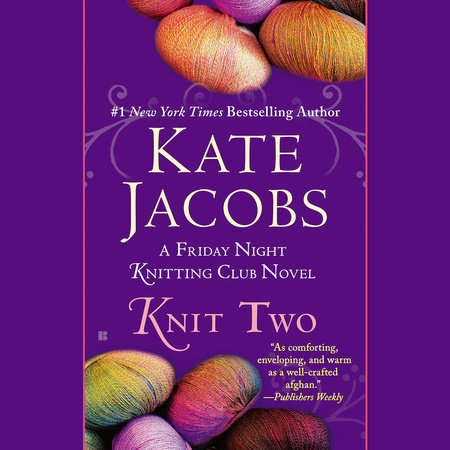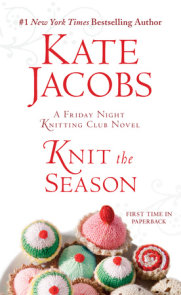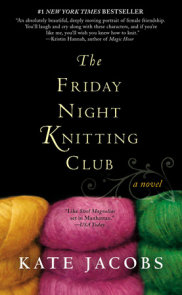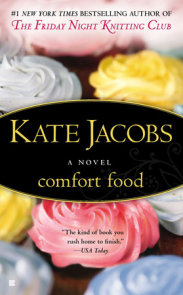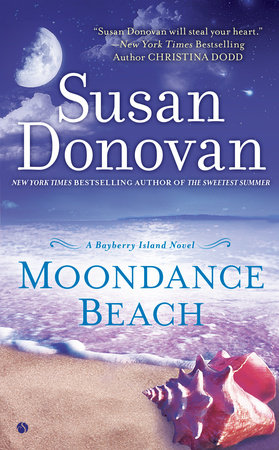Author Q&A
Did you think you'd write a sequel as soon as you finished The Friday Night Knitting Club, or did that decision come later?
I was exhausted right after finishing The Friday Night Knitting Club! It was my first novel and I was ready for a good, long nap after all that writing! Though, in all seriousness, I had some other characters rumbling around in my brain and their stories deserved telling. So I wrote Comfort Food. That said, I always had a future mapped out for the members of the knitting club, and, after hearing from so many fans who were eager to know what happens, it didn't seem fair to just keep it all to myself. Writing this sequel was truly a joy, and I'm excited to share the new book with readers.
Without giving too much away, are there things that will surprise readers in Knit Two?
Knit Two is set about five years after the first book, and all of the characters are older and, in some cases, more mature. Dakota is in college now. Though just because we get older doesn't always make us wiser! There are new friendships between the characters, folks who didn't know each other as well in the original, and overall the sequel is much more upbeat than the ending of the first book.
Which character do you identify with most strongly? How much of yourself did you put into these characters?
Well, I really love all the characters - I forgive them all their flaws and mistakes. I identify with many of the struggles the characters have, to some degree, but that is something many women could say. Issues about career, about getting married, about mapping out our lives (and learning how quickly things can go off-road). I'm there in the book, and then again I'm not there. Sometimes I put personal things in quite consciously - I did that more with Comfort Food, in which the best friend has the same last name as my best friend, for example. Other times, little bits of me just seep into the characters, and it could be a favorite food they have or a pet peeve. But I tend not to write one fully developed character who is a stand-in for me - that would be too revealing!
To what extent are the characters based on your own circle of family and friends?
In The Friday Night Knitting Club, I could point to Georgia's Gran and the similarities with my own grandmother, who was a great knitter, great baker, and great lady. And so opinionated! Or I could share that when I was a little kid, I loved to bake - as Dakota does - and then when I was a teenager I was so like Darwin, who is suspicious of everything domestic. In Knit Two, the characters have all continued to grow and change, and Gran is mostly off-page in Scotland. So they're all moving beyond these similarities and truly becoming themselves.
Your characters are of different races, religions, and economic backgrounds, but their friendship mostly transcends those factors. That said, Dakota, Georgia's daughter, has to confront some issues related to her biracial background. So what does all this say about the way these kinds of differences affect friendships between women in the real world?
My personal world is made up of friends and family who are different from me - and so I think it's important that the group in the novel be multiracial, multigenerational, and have different religions and sizes of bank accounts. That's real. Because at our core, regardless of differences, I think we all share similar desires for community and connection. We want to love and be loved. And, like the women in Knit Two, most of our conversations revolve around what we're dealing with in any given moment, whether it's something about our work or our family. In other words, our struggles and similarities form the basis for our friendships. That said, differences do remain. It's important to be honest about them, not to pretend they don't exist. It is very difficult to ever fully comprehend another person's struggles when we cannot personally relate, when we haven't walked in their shoes. That's why compassion is such a crucial element in a relationship. And why I try to bring compassion to writing honestly in my novels.
Knit Two is primarily a story of friendships between women, like The Friday Night Knitting Club, but you also include some significant male characters, and there's one particularly close but platonic male-female friendship. Women's friendships are certainly special, but can men join the circle, too, maybe as associate members?
Of course men can join! And it's not just characters. Over the past year, I've heard from a handful of men who've read the book, and that's been a delight. Personally, my husband is my best friend, and many women I know have important men in their lives. It seemed only appropriate that men have a place in the novel, and developing the platonic friendship was a way to show a male character in more than just the role of the love interest.
What is it about knitting that makes it so popular right now, both traditional and hip at the same time?
Knitting is a lot of things all wrapped up in a ball of yarn. It's memory of good old days and sweet grandmothers. It can be an assertion of personality, of irony, of creativity. It can be a luxurious indulgence using the fanciest materials, and it can be a budget-minded holiday scarf using yarn on sale. You can knit all alone, or you can find a group and knit with them. Knitting has the flexibility to meet our needs for a creative and emotional outlet, and it has a very soothing rhythm. It nurtures, and I think that's a very good thing in times of uncertainty.
How's your own knitting going? When do you find time for it?
I have so many half-finished projects it is becoming ridiculous! Our guest room has turned into a stash room, which is good for me but crowded for guests. I've moved into my afghan phase - well, it's more about throws I can make in one piece - and that's all I want to knit lately. The only hiccup - and it's a good problem to have - is that I'm so busy writing, talking to book clubs, going on tour, and so on that I only have time for a few rows here or there. However, knitting on large needles has really helped stretch out my wrists, which can become stressed after being perched on the keyboard all day. So now I have an excuse to sneak in a little knitting!
The Friday Night Knitting Club was extremely popular with reading groups, and you spoke to many of them by phone. Will you do the same thing for Knit Two?
Absolutely! I talk to about 40 clubs every month. It's good fun. The telephone call-ins started when a group from Minnesota invited me to chat with them during their meeting. I was nervous but I ended up having such a good time that I blogged about the experience at katejacobs.com. Suddenly, I had more invitations, and that's when I decided to put a button on my website. Now I talk to clubs any day of the week. I've talked to clubs from the back of a cab, standing in a line for missing luggage at the airport, driving a rental car on a visit home to see my parents. (I had a headset so I was driving hands free!) Setting up the calls is easy: A member of a group just needs to send me the date & time of their club's get-together and if I can fit it in, I will!
A big part of Knit Two takes place in Italy. Did you travel there on research? How tough a trip was that?
Oh, terribly difficult, trying to figure out how to eat everything and see everything! No, it was delightful, of course, every day filled with new discoveries. My husband was with me and we both love history and walking and hearty dishes of pasta, so it was a perfect trip for us. We learned a lot, I would say, as do the characters in Knit Two. Isn't it funny how sometimes we have to go somewhere else to see what we already know?
Food plays an important role in both The Friday Night Knitting Club and Knit Two. You've also written a novel about a cooking show called Comfort Food. Are knitting and friendship and food all intimately connected with one another? Is that why you include both knitting instructions and recipes at the end of Knit Two?
Well, food keeps us going, after all. I write often about characters trying to nourish themselves, typically in an emotional sense but also in a physical sense. And whereas cooking is an important part of many characters' lives in Comfort Food, baking is significant to one member of the Friday Night Knitting Club. I know sometimes kids change their ideas of what they want to do multiple times, but I always knew what I wanted to do. So does Dakota. As for the pattern and recipes, it can be fun to have little extras in a book. Not to mention that almost every book club I speak with has made Dakota's muffins from The Friday Night Knitting Club, so I thought they needed a new recipe to try!
New York City—the Upper West Side of Manhattan, to be specific—is almost another character in the book. You grew up in western Canada, lived in New York for a long time, and now live in Los Angeles. But New York continues to have a hold on your imagination. Why?
That's something I've thought about very often, in fact. You know, I didn't like New York very much when I initially moved there. Too loud, too busy. It didn't feel like my place. But a couple of things happened. For one thing, I made a great group of friends - we used to always get together on Tuesday nights (and no, we didn't knit!) - and that helped make New York feel more like a community. For another, I met the man who became my husband, and he grew up just outside the city. But I suppose also the mix of having my first apartment, my first job, becoming an adult, all happened in New York. And being in the city on 9/11 solidifies a connection, that's for sure. While I do love California - the weather is amazing, the people friendly - right now I feel that I understand, in an intimate way, small-town Canada and urban Manhattan. And I don't think I'll ever be done exploring the lives of New Yorkers. Frankly, I think of myself as a Canadian-born New Yorker who just happens to live on the West Coast. As I say in my books, it's all about defining yourself as you want to be.
Are you working on a new book now?
I've been asked this question often lately - which I suppose is a good thing! Yes, I am happily working on a new book already. There are a lot of stories I want to tell. But I'm a bit particular about not talking about what I'm writing until it's quite far along. So you won't get any details yet!
What is the core message of Knit Two? What do you hope readers take away from it?
The Friday Night Knitting Club was about forgiveness, about getting beyond regret and moving forward. It was also about becoming independent and learning to live on one's own terms, as well as this idea of how important it is to have strong female friendships, and to recognize and honor those relationships. Knit Two is about the power of legacy, about how we hold on so tightly because we're afraid to let go - and how sometimes the letting go allows us to keep a better hold on things in the long run. This story is about falling into patterns and figuring out if and when it's time to break those patterns. About when it's time for acceptance and when it's time to be courageous and be bold. It's about the idea that success is a journey, not a sprint, and that the answers for one moment in our lives may not be the answers for another. Ultimately, Knit Two is a novel about hope.



